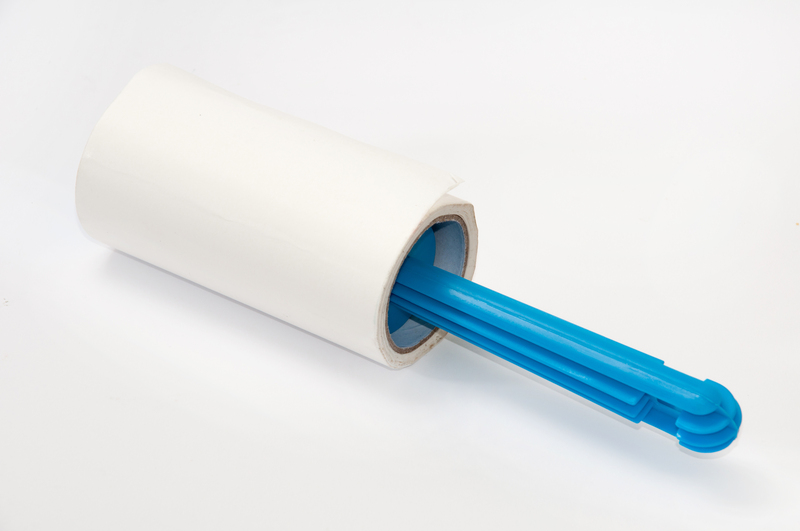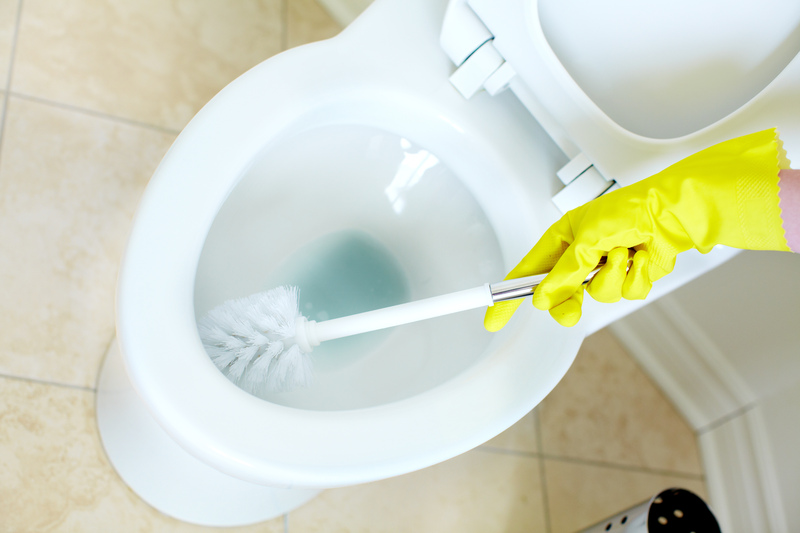Mould-Free Windows: Cleaning Tips for Sill Perfection
Posted on 04/06/2025
Mould-Free Windows: Cleaning Tips for Sill Perfection
Maintaining immaculate, mould-free windowsills is essential for both aesthetics and your home's health. Humidity, condensation, and dust accumulation create the perfect breeding ground for mould on window sills. If left unchecked, these unsightly mould spots can cause long-term damage and decrease indoor air quality. In this comprehensive article, discover the best cleaning strategies and preventative measures for mould-free window sills. Keep your home fresh, pristine, and healthy with our expert cleaning advice.
Why Is Mould Growth Common Around Window Sills?
Mould thrives in damp, poorly ventilated environments. *Window sills* are especially prone due to:
- Condensation: Temperature fluctuations between indoors and outdoors lead to moisture buildup on window panes and sills.
- Poor Air Circulation: Inadequate airflow allows moisture to linger, especially behind curtains or blinds.
- Neglected Cleaning: Dust and dirt accumulation acts as food for mould spores, accelerating growth.
- Leaks: Faulty window seals or deteriorating caulking can let rainwater seep onto sills and surrounding walls.
Addressing these factors is the first step towards achieving mould-free windows.

Health Risks Associated with Mouldy Window Sills
*Prolonged exposure to mould*, especially black mould, can lead to health complications including:
- Allergic reactions (sneezing, coughing, runny nose)
- Asthmatic symptoms and worsened respiratory issues
- Skin irritation
- Chronic sinus infections
Maintaining clean, mould-free window sills is pivotal for household well-being.
Essential Supplies for Mould-Free Window Cleaning
Gather the following supplies to effectively remove mould and maintain spotless windowsills:
- Protective gloves and a mask
- Microfiber cloths or paper towels
- Soft-bristled brush or old toothbrush
- Bucket of warm water
- White vinegar or hydrogen peroxide
- Baking soda
- Non-abrasive spray cleaner
- Spray bottle
- Mild detergent (optional)
Using eco-friendly solutions like vinegar or baking soda is effective and safe for most window surfaces.
Step-By-Step Guide: How to Clean Window Sills and Remove Mould
1. Prepare the Area
- Open windows to ensure ventilation. This helps minimize inhalation of spores and speeds drying time.
- Wear gloves and a mask to protect your skin and lungs, as mould exposure can be harmful.
- Clear away any obstructions near the sill, such as curtains or blinds, for easier access.
2. Dry Clean the Sill
- Use a vacuum cleaner with a crevice tool or a soft brush to remove loose dirt and dust.
- This step prevents extra dirt from turning into a muddy mess when wet cleaning is done.
3. Apply an Effective Cleaning Solution
For a natural and effective mould remover, combine equal parts white vinegar and water in a spray bottle. Alternatively, use 3% hydrogen peroxide for stubborn mould spots.
- Spray the solution generously onto the affected areas.
- Let it sit for at least 10-15 minutes. This dwell time allows the solution to penetrate mould and spores.
Never mix vinegar with hydrogen peroxide in the same container--they should be used separately for safety.
4. Scrub Away the Mould
- With a soft-bristled brush or an old toothbrush, gently *scrub the window sill*
- Take care not to damage paint, wood, or sealants.
- For stubborn spots, sprinkle baking soda directly on the area before scrubbing--this helps neutralize stains and odours.
5. Rinse and Dry Thoroughly
- Wipe down with a damp microfiber cloth to remove any residual cleaner and mould debris.
- Follow up with a dry, clean cloth to absorb excess moisture.
- Leave the window open or use a fan to ensure complete drying, as moisture encourages re-growth.
Preventing Future Mould Growth on Window Sills
Prevention is just as important as cleaning. Here's how to keep mould-free windowsills for the long term:
Control Indoor Humidity
- Keep indoor humidity below 60%, ideally between 30%-50%.
- *Use dehumidifiers* in damp rooms and consider a hygrometer for accurate readings.
Enhance Ventilation
- Open windows regularly, especially after cooking, showering, or drying clothes indoors.
- Set up extractor fans in kitchens and bathrooms.
Address Leaks Promptly
- Inspect seals, caulking, and frames regularly for cracks or deterioration.
- Replace faulty weatherstripping or re-seal gaps as soon as possible.
- Keep gutters and downspouts clean to prevent water from flowing onto windowsills.
Clean and Dust Regularly
- Wipe down sills weekly with a damp cloth to remove dust and allergens.
- Wash windows at least once per season to eliminate dirt, condensation, and potential mould spores.
Use Anti-Mould Treatments
- Apply a thin layer of anti-mould spray or solution after cleaning for extra protection.
- Consider eco-friendly products to avoid chemical exposure indoors.
Window Materials and Mould Resistance
The susceptibility of your window sills to mould depends on their material:
- Wood: Most vulnerable due to absorbent nature. Treat and seal wood surfaces regularly.
- uPVC (vinyl): Less porous, easier to clean, and resistant to mould when wiped regularly.
- Aluminium: Rarely supports mould growth but may collect condensation around seams.
Tailor your cleaning approach to the material for the best mould-free finish.
Natural vs. Chemical Cleaners: Which Is Better?
Natural cleaners (vinegar, baking soda, and hydrogen peroxide) are eco-friendly, safe for most surfaces, and effective for mild-to-moderate mould. For severe infestations, commercial anti-mould sprays or diluted bleach may be considered, but always:
- Test on an inconspicuous area to avoid damage.
- Ventilate the room thoroughly during and after cleaning.
- Keep children and pets away from treated areas until dry.
For allergy or asthma sufferers, avoid harsh chemicals and opt for natural alternatives wherever possible.
Common Mistakes to Avoid When Cleaning Window Sills
- Neglecting to dry thoroughly: Moisture left behind encourages faster mould return.
- Using abrasive pads or tools: These can scratch surfaces and damage seals.
- Overlooking window frames and edges: Mould often hides in seams and under sealant.
- Skipping protective gear: Always use gloves and, if needed, a mask to avoid irritation or inhalation.
Professional Help: When to Call in the Experts
In most cases, regular cleaning and proactive maintenance will suffice. However, large or persistent mould patches may indicate deeper issues (like structural leaks or hidden rot). Call a professional if you notice:
- Mould covering areas larger than 1 square metre
- Stubborn growth that returns despite cleaning
- Strong musty odours or visible decay in woodwork
- Health symptoms worsening when near affected windows
Professionals can assess underlying issues, use specialist equipment, and suggest long-lasting solutions for truly mould-free window sills.

FAQs: Keeping Windows Sills Mould-Free
How often should I clean my window sills?
For optimal health and aesthetics, wipe down sills at least once a week and deep-clean seasonally.
Can I use bleach for removing mould?
Yes, diluted bleach (1 part bleach to 10 parts water) can kill mould spores. However, always rinse thoroughly and avoid prolonged contact with paint, wood or aluminium. Natural alternatives like vinegar or hydrogen peroxide are often safer for frequent use.
What causes window sill mould in double-glazed windows?
Even with modern windows, condensation can occur if indoor humidity is high or if seals are compromised. Regular ventilation and maintenance are key.
How can I prevent condensation on my windows?
Increase airflow by opening windows, use extractor fans, and keep interior doors open. Dehumidifiers are especially useful in bedrooms and living areas.
Conclusion: The Path to Perfect, Mould-Free Windows
Maintaining mould-free windows and spotless sills doesn't have to be overwhelming! By establishing a simple cleaning routine, using the right products, and controlling indoor moisture, you can enjoy fresh, pristine, and healthy living spaces year-round. Remember, prevention is always more effective than cure, and a little regular attention to your window sills will pay off with sparkling results and a safer home.
- Clean routinely with gentle, effective cleaners.
- Monitor humidity and address leaks quickly to stop mould before it starts.
- Protect your family's health while making your windows shine!
If you're ready for beautiful, mould-free window sills, follow these tips and enjoy the clarity, charm, and comfort that only a spotless window can bring.




